- Understanding Sciarid Midges and Their Impact
- Life Cycle
- Impact on Plants
- Signs of Infestation
- Prevention and Control
- Conclusion
- Identifying Sciarid Midge Infestations
- Signs of Sciarid Midge Infestations
- Preventing and Controlling Sciarid Midge Infestations
- Conclusion
- Introducing Beneficial Predators
- 1. Hypoaspis miles (Stratiolaelaps scimitus)
- 2. Fungus Gnat Predators (Various species of predatory insects)
- 3. Bacillus thuringiensis israelensis (Bti)
- Conclusion
- Applying Biological Controls
- Implementing Cultural Control Practices
- 1. Proper sanitation
- 2. Proper watering practices
- 3. Good drainage
- 4. Monitoring and early detection
- 5. Biological controls
- 6. Crop rotation
- 7. Use of yellow sticky traps
- 8. Quarantine measures
- Using Chemical Controls
- Insecticides
- Cultural Practices
- Preventing Sciarid Midge Infestations
- 1. Proper sanitation:
- 2. Good drainage:
- 3. Biological control:
- 4. Yellow sticky traps:
- 5. Use of insecticides:
- Monitoring and Managing Sciarid Midge Populations
- 1. Monitoring Methods
- 2. Cultural Practices
- 3. Biological Controls
- 4. Chemical Controls
- “Question-Answer”
- What are sciarid midges?
- How can sciarid midges be prevented and controlled?
- What are cultural controls for sciarid midge prevention?
- What are biological controls for sciarid midge prevention?
- What are chemical controls for sciarid midge prevention?
- Are there any natural remedies to prevent sciarid midges?
- Can sciarid midges cause damage to plants?
- “Video” How To Get Rid of Midges 8 Simple Steps
Sciarid midges, also known as fungus gnats, are a common pest in indoor gardens and plant nurseries. These small flying insects can cause significant damage to plants by feeding on the roots and spreading diseases. To prevent and control sciarid midges, it is important to implement key strategies and techniques.
Cultural Practices: One of the most effective ways to prevent the infestation of sciarid midges is to maintain a clean and hygienic growing environment. This includes regularly removing dead leaves and decaying organic matter, as these provide ideal breeding grounds for the pest. Additionally, it is important to avoid overwatering plants, as excessive moisture can increase the risk of sciarid midge infestation.
Biological Control: Another strategy for managing sciarid midges is through the use of biological control methods. These involve introducing natural enemies of the pest, such as predatory mites or nematodes, which feed on the larvae of the sciarid midges. These biological control agents can be applied as a preventative measure or in response to an existing infestation.
Chemical Control: In cases where cultural and biological control methods are not sufficient, chemical control options may be necessary. There are a variety of insecticides available that can effectively target and eliminate sciarid midges. However, it is important to carefully read and follow the instructions on the product labels to ensure the safety of both the plants and the environment.
Conclusion: Preventing and controlling sciarid midges is essential for maintaining the health and productivity of indoor gardens and plant nurseries. By implementing cultural practices, utilizing biological control methods, and resorting to chemical control when necessary, it is possible to effectively manage these pests and minimize their impact on plants.
Understanding Sciarid Midges and Their Impact
Sciarid midges, also known as fungus gnats, are small insects that belong to the family Sciaridae. They are commonly found in areas with high moisture and organic matter, such as potting soil, compost piles, and decaying vegetation. Sciarid midges can be a nuisance in both indoor and outdoor environments, particularly in greenhouses and gardens.
Life Cycle
The life cycle of sciarid midges consists of four stages: egg, larva, pupa, and adult. The adult female lays eggs in moist soil or organic matter, which hatch into larvae in about 4-6 days. The larvae feed on organic material, such as decaying plant matter and fungi, for approximately 2-4 weeks before entering the pupal stage. After a pupal stage of about 6-10 days, the adult midges emerge and begin the cycle again.
Impact on Plants
While adult sciarid midges do not typically cause direct damage to plants, their larvae can be problematic. The larvae feed on the roots of plants, which can lead to root damage, stunted growth, and reduced plant vigor. In severe infestations, plants may even become susceptible to other pests and diseases.
Signs of Infestation
There are several signs that indicate the presence of sciarid midges or their larvae:
- Adult midges flying around the plants, particularly near the soil surface
- Small, black flies resting on leaves or soil
- Damaged roots or root hairs
- Yellowing or wilting leaves
- Pale or discolored growth
Prevention and Control
Preventing and controlling sciarid midges involves a combination of cultural, physical, and chemical methods:
- Cultural Methods: Maintaining proper plant hygiene, such as removing decaying plant matter and keeping the soil surface clean, can help reduce the likelihood of infestations.
- Physical Methods: Using sticky traps or yellow sticky cards can help capture adult midges and reduce their population. Additionally, using a layer of sand or fine gravel on the soil surface can discourage egg-laying and hinder the movement of larvae.
- Chemical Methods: In severe infestations, chemical insecticides may be necessary. It is important to choose an appropriate product and follow the instructions carefully to avoid harm to plants and beneficial insects.
Conclusion
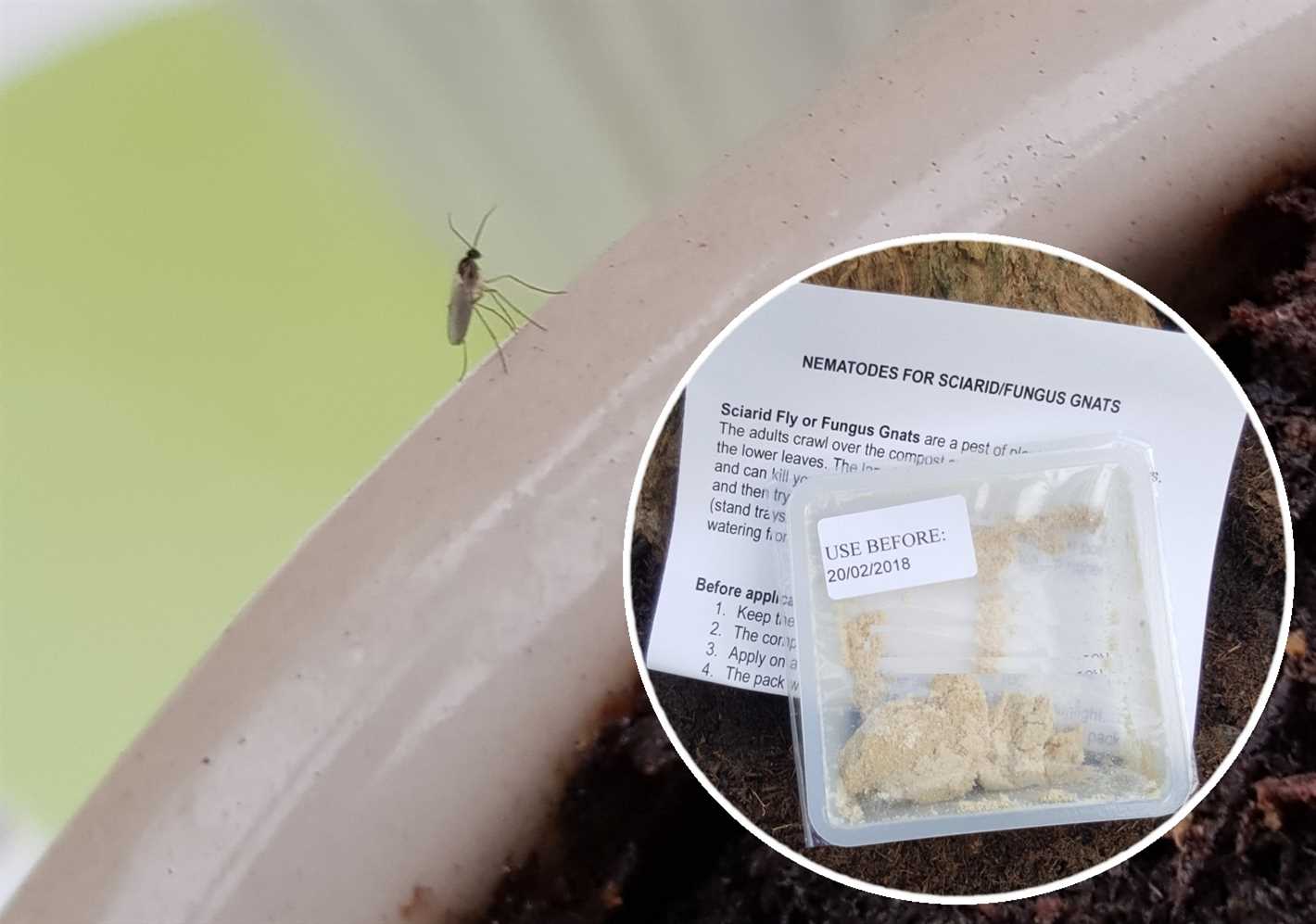
Understanding the life cycle and impact of sciarid midges is crucial in effectively preventing and controlling their populations. By implementing a combination of cultural, physical, and chemical methods, it is possible to reduce the presence of sciarid midges and minimize their impact on plants.
Identifying Sciarid Midge Infestations
Sciarid midges, also known as fungus gnats, are small flies that are common pests in indoor gardens and greenhouses. These insects can cause damage to plants by feeding on their roots, and their larvae can also feed on seedlings and young plants. To effectively prevent and control sciarid midge infestations, it is important to be able to identify them early on.
Signs of Sciarid Midge Infestations
- Flying adult midges: Adult sciarid midges are small flies, measuring about 1/8 inch in length. They have long legs and segmented antennae. These midges are weak fliers and can often be seen hovering around plants or resting on their leaves.
- Yellow sticky traps: Placing yellow sticky traps near plants can help in detecting sciarid midges. These traps attract and catch adult midges, allowing you to monitor their presence in your garden or greenhouse.
- Root damage: The larvae of sciarid midges feed on the roots of plants, causing damage to the root system. Infested plants may show signs of stunted growth, wilting, or yellowing leaves. Carefully inspecting the roots of affected plants may reveal the presence of tiny white larvae.
- Maggot-like larvae: The larvae of sciarid midges are small, maggot-like creatures. They are usually white or transparent in color and can be found in the soil or on the surface of the growing medium. These larvae can also cause damage to seedlings or young plants by feeding on their stems or leaves.
Preventing and Controlling Sciarid Midge Infestations
To prevent and control sciarid midge infestations, it is important to implement the following practices:
- Allow the topsoil to dry between waterings, as sciarid midges prefer moist conditions for laying their eggs.
- Avoid overwatering plants and ensure proper drainage to reduce excess moisture in the growing medium.
- Remove any dead or decaying plant material, as this can attract adult midges.
- Inspect plants regularly and carefully monitor for signs of sciarid midge infestations.
- If infestation is detected, consider using sticky traps or biological control methods such as nematodes or predatory mites.
- Use insecticides as a last resort, and only if other control methods have failed.
Conclusion
Identifying sciarid midge infestations early on is crucial for effective prevention and control. By being able to recognize the signs and symptoms of these pests, gardeners and greenhouse operators can take the necessary steps to stop the infestation from spreading and causing further damage to their plants.
Introducing Beneficial Predators
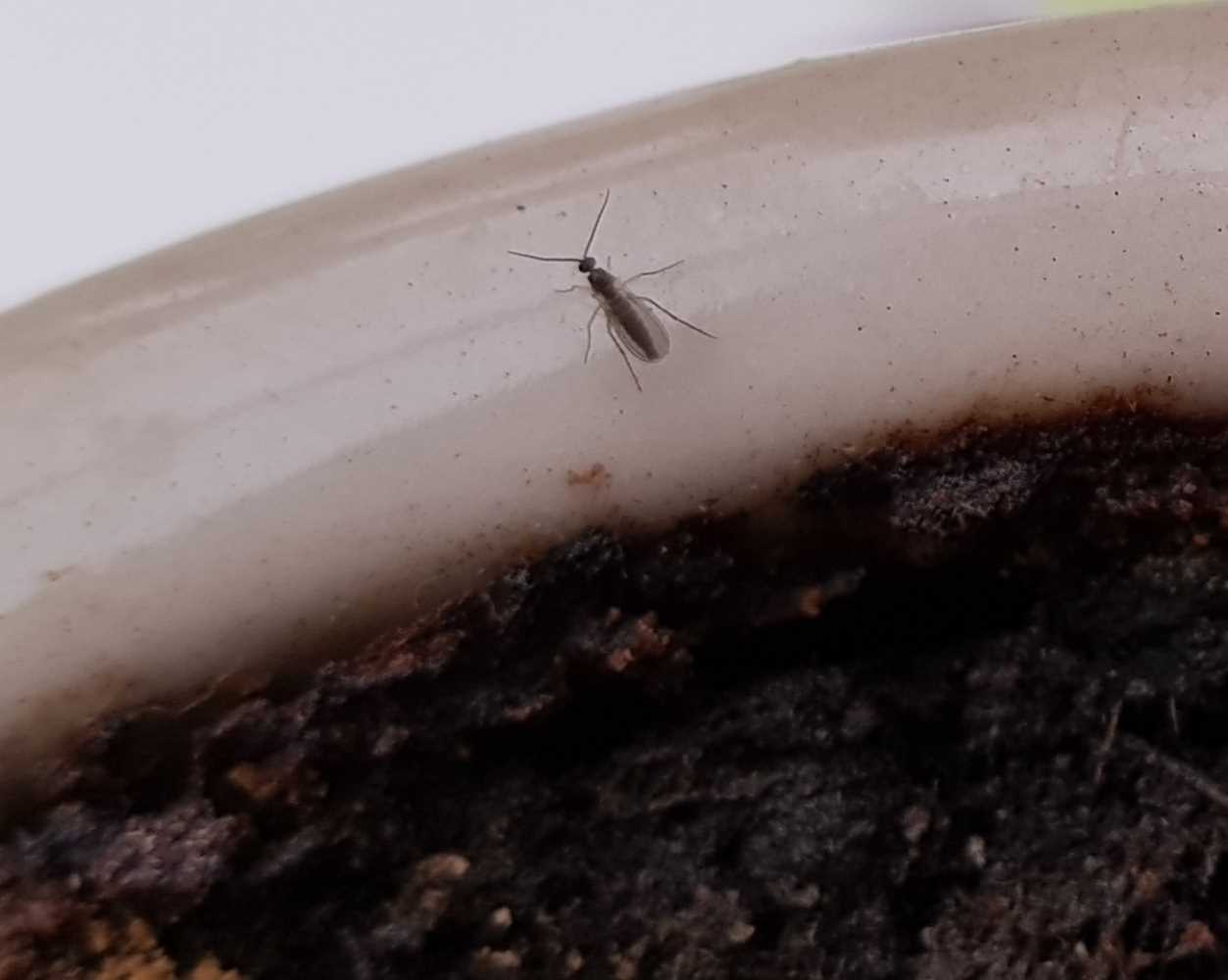
One effective method for controlling Sciarid midges is through the introduction of beneficial predators. These predators are natural enemies of the midges and help to keep their population under control. By using beneficial predators, you can reduce the need for chemical pesticides and promote a more environmentally-friendly approach to pest management.
1. Hypoaspis miles (Stratiolaelaps scimitus)
Hypoaspis miles, also known as Stratiolaelaps scimitus, is a predatory mite that feeds on the larvae and pupae of Sciarid midges. These mites are extremely small, measuring only about 0.5 mm in length. They are effective at controlling midge populations, as they can consume large numbers of larvae and pupae in a short period of time.
You can introduce Hypoaspis miles into your growing medium by sprinkling them on the surface or incorporating them into the soil. These mites will actively search for Sciarid midge larvae and pupae, feeding on them and preventing their development into adults.
2. Fungus Gnat Predators (Various species of predatory insects)
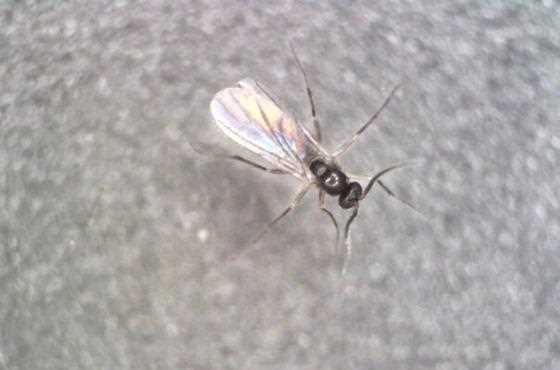
There are several species of predatory insects that feed on Sciarid midges, including rove beetles (Dalotia coriaria), predatory nematodes (Steinernema feltiae), and predatory mites (Stratiolaelaps scimitus). These predators actively hunt for Sciarid midge larvae and pupae, effectively keeping their populations in check.
Rove beetles are particularly effective predators of Sciarid midges. They are voracious predators and can consume large numbers of midge larvae in a short period of time. Predatory nematodes are microscopic worms that infect and kill midge larvae, while predatory mites feed on midge eggs and larvae.
3. Bacillus thuringiensis israelensis (Bti)
Bacillus thuringiensis israelensis, also known as Bti, is a naturally occurring bacteria that is toxic to the larvae of many insect pests, including Sciarid midges. Bti is available in powder or liquid form, and can be applied to the growing medium or sprayed onto the foliage.
When the Sciarid midge larvae consume the Bti, the bacteria produce a toxin that kills the larvae. Bti is highly specific to the larvae of certain insects and is considered safe for use in organic gardening. It is important to follow the instructions on the product label when using Bti, as overuse can lead to the development of resistance in the target pests.
Conclusion
Introducing beneficial predators is an effective and environmentally-friendly strategy for controlling Sciarid midges. By utilizing predatory mites, insects, and bacteria, you can reduce the population of midges and minimize the damage they cause to your plants. Additionally, the use of beneficial predators can help to reduce the reliance on chemical pesticides, leading to a healthier and more sustainable pest management approach.
Applying Biological Controls
Biological control is an effective and environmentally friendly approach to managing sciarid midges. It involves using natural predators or parasites to reduce the population of these pests. Below are some key strategies and techniques for applying biological controls:
- Beneficial nematodes: These microscopic worm-like organisms are an excellent natural enemy of sciarid midges. They can be applied to the growing medium, where they actively seek out and kill the larvae. Beneficial nematodes are commercially available and can be easily applied using a watering can or sprayer.
- Predatory mites: Certain species of predatory mites, such as Hypoaspis miles, are effective in controlling sciarid midge populations. These mites feed on the larvae and pupae of the midges and can be introduced into the growing medium. They are available from biological control suppliers.
- Bacillus thuringiensis: This bacteria produces a toxin that specifically targets the larvae of sciarid midges. It can be applied to the growing medium in the form of a biological pesticide. Bacillus thuringiensis is safe for humans, pets, and beneficial insects but should be used according to the manufacturer’s instructions.
- Sticky traps: Yellow sticky traps can be used to monitor and catch adult sciarid midges. These traps have a bright yellow color, which attracts the midges, and a sticky surface that prevents them from flying away. Placing these traps near the affected plants can help reduce the overall population.
- Cultural practices: Implementing cultural practices can also help in managing sciarid midges. These include avoiding overwatering, improving air circulation, and maintaining cleanliness in the growing area. These practices create unfavorable conditions for midge infestations.
It is important to note that biological control methods may take some time to show results, and multiple applications may be necessary. Additionally, it is crucial to properly identify the pest and choose the appropriate biological control method for effective management.
| Pros | Cons |
|---|---|
| Environmentally friendly | May take time to show results |
| Specifically targets sciarid midges | May require multiple applications |
| Safe for humans, pets, and beneficial insects | Effectiveness may vary |
| Can be integrated with other control methods | May not completely eliminate the pest |
Implementing Cultural Control Practices
Cultural control practices play a significant role in preventing and controlling sciarid midges. These practices involve manipulating the growing conditions and cultural practices in order to make the growing environment less suitable for the development of sciarid midges.
1. Proper sanitation
Keeping the greenhouse or growing area clean and free from organic debris can greatly reduce the presence of sciarid midges. Regularly remove any fallen leaves, dead plants, or weeds that may serve as breeding sites for these pests.
2. Proper watering practices
Overwatering can create moist conditions that are favorable for sciarid midges. Implement proper watering techniques by allowing the soil to dry out between waterings. Use bottom watering or drip irrigation systems to reduce the moisture level on the surface of the soil.
3. Good drainage
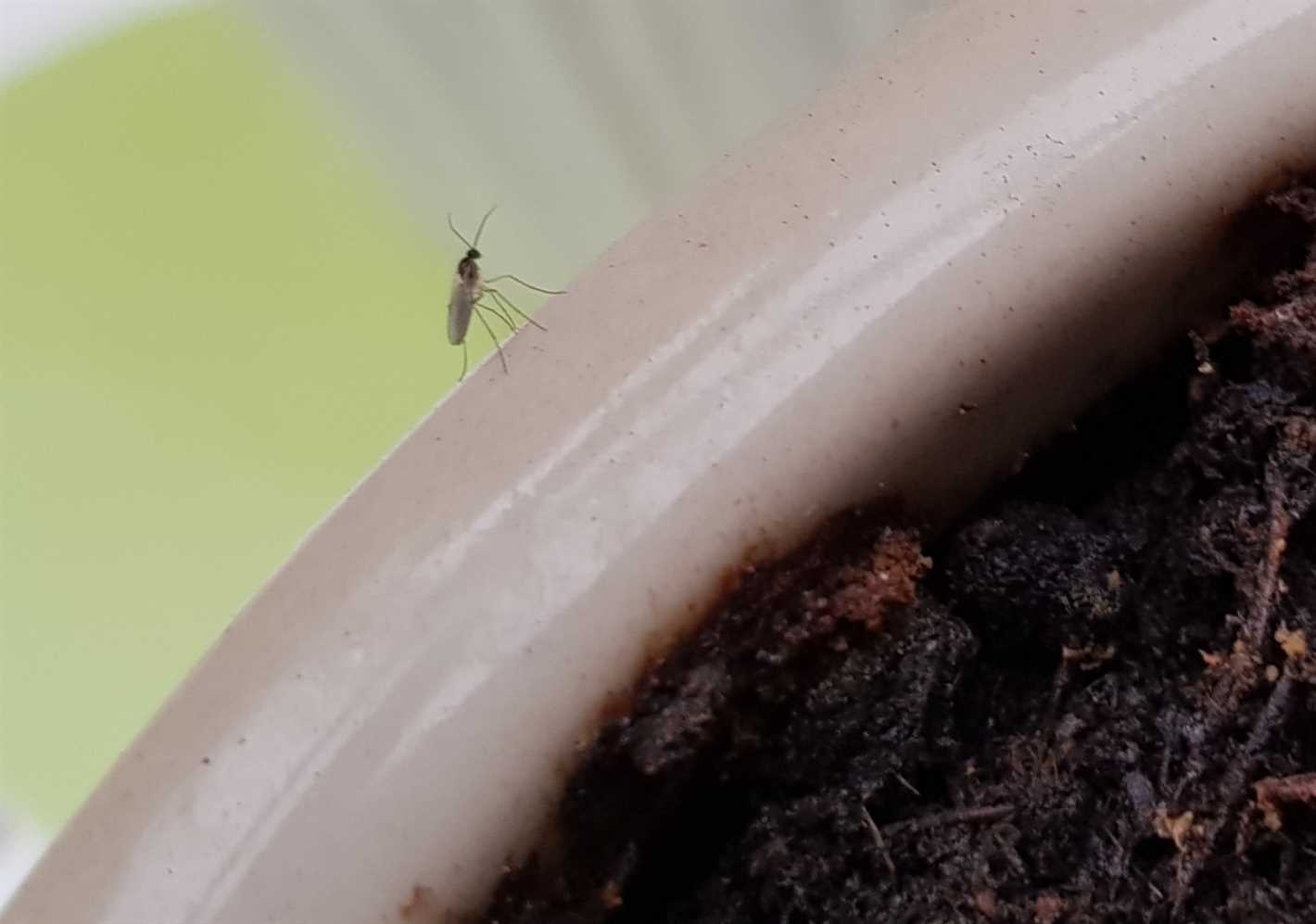
Ensure proper drainage in pots and containers to prevent waterlogging. Excess moisture can provide an ideal breeding ground for sciarid midges. Use well-draining potting mix and avoid using saucers under pots to allow for proper drainage.
4. Monitoring and early detection
Regularly monitor your plants for any signs of sciarid midge infestation. Inspect the soil surface for adult midges, larvae, or signs of damage. Early detection can help prevent the spread of the infestation and allow for immediate intervention.
5. Biological controls
Implement biological control methods, such as introducing predatory mites or nematodes, to help control sciarid midge populations. These natural predators feed on the larvae of sciarid midges, reducing their numbers and preventing further damage to plants.
6. Crop rotation
Practice crop rotation to disrupt the life cycle of sciarid midges. Avoid planting the same crop or host plants in consecutive growing seasons. This helps prevent the buildup of sciarid midge populations and reduces the risk of infestation.
7. Use of yellow sticky traps
Place yellow sticky traps near plants to attract and capture adult sciarid midges. These traps serve as a monitoring tool and can help reduce the population of adult midges.
8. Quarantine measures
Implement quarantine measures for new plants or materials brought into the growing area. Inspect and isolate new plants to prevent the introduction of sciarid midges and other pests.
By implementing these cultural control practices, growers can effectively prevent and control sciarid midges, reducing the damage caused to plants and improving overall crop health.
Using Chemical Controls
Chemical controls can be an effective way to prevent and control sciarid midges infestations. However, it is important to use chemical controls responsibly and in accordance with the instructions provided by the product manufacturer.
Insecticides
Insecticides are chemicals specifically designed to kill or repel insects. When dealing with sciarid midges, there are several insecticides available that can be used as a control measure.
- Contact Insecticides: These insecticides come in direct contact with the insects, either through spraying or drenching the affected areas. They are effective in killing adult sciarid midges on contact.
- Systemic Insecticides: Unlike contact insecticides, systemic insecticides are absorbed by the plants and provide long-term protection against sciarid midges. They are usually applied to the soil or used as foliar sprays.
- Biological Insecticides: Biological insecticides are derived from naturally occurring substances or organisms. They target specific pests, such as sciarid midges, while minimizing harm to beneficial insects and the environment.
It is important to carefully read and follow the instructions provided by the insecticide manufacturer. Avoid using insecticides excessively or without proper knowledge, as this can lead to ineffective control or harm to plants, beneficial insects, and the environment.
Cultural Practices
In addition to chemical controls, implementing cultural practices can also help prevent and control sciarid midges infestations.
- Good Hygiene: Keeping the growing area clean and free from decaying plant matter can help reduce the potential breeding sites for sciarid midges.
- Proper Watering: Overwatering can create conditions favorable for sciarid midge larvae. Avoid overwatering and allow the top layer of soil to dry out between watering cycles.
- Avoid Organic Matter: Sciarid midges are attracted to organic matter. Minimize their presence by using sterile potting soil and regularly removing dead leaves or plant debris.
- Yellow Sticky Traps: Placing yellow sticky traps near plants can help catch adult sciarid midges and reduce their populations.
- Biological Controls: Introducing beneficial insects, such as predatory mites or nematodes, can help naturally control sciarid midges by preying on their larvae.
By combining chemical controls with proper cultural practices, it is possible to effectively prevent and control sciarid midges infestations while minimizing the negative impact on the environment.
Preventing Sciarid Midge Infestations
Sciarid midges can be a common pest in indoor gardens and plant nurseries. These small flies lay their eggs in moist soil or organic matter, and the larvae feed on the roots of plants, causing damage to the roots and inhibiting plant growth. To prevent sciarid midge infestations, there are several key strategies and techniques that can be employed:
1. Proper sanitation:
Keeping the growing area clean and free from debris is crucial in preventing sciarid midge infestations. Regularly remove fallen leaves, dead plants, and any decaying organic matter that may attract midges. Dispose of them properly to prevent the midges from breeding.
2. Good drainage:
Sciarid midges thrive in moist conditions, so ensuring good drainage is essential. Use well-draining potting soil and containers with drainage holes to avoid waterlogged conditions that can attract midges. Avoid overwatering and water plants at the base rather than overhead, as excess moisture can create a favorable environment for midge infestation.
3. Biological control:
Introducing natural predators of sciarid midges can be an effective method of prevention. Predatory soil mites, such as Hypoaspis miles, feed on the larvae and help control the population of midges. Additionally, certain nematodes, like Steinernema feltiae, can be used as a biological control agent to target and kill the larvae.
4. Yellow sticky traps:
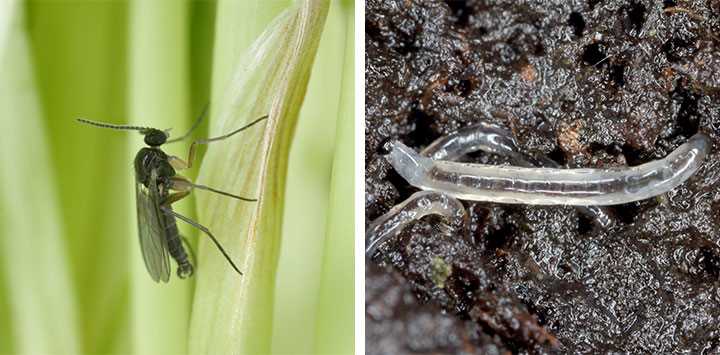
Placing yellow sticky traps near plants can help in monitoring and capturing adult sciarid midges. The yellow color attracts the midges, and the sticky surface traps them, reducing the population and preventing them from laying eggs in the soil.
5. Use of insecticides:
In severe infestations, the use of insecticides may be necessary. However, it is important to choose insecticides that specifically target sciarid midges and follow the instructions for application. Organic insecticides, such as those derived from neem oil or insecticidal soaps, can be effective while minimizing harm to beneficial insects.
By implementing these preventive measures, gardeners and plant enthusiasts can reduce the risk of sciarid midge infestations and maintain healthy plants in their indoor gardens or nurseries.
Monitoring and Managing Sciarid Midge Populations
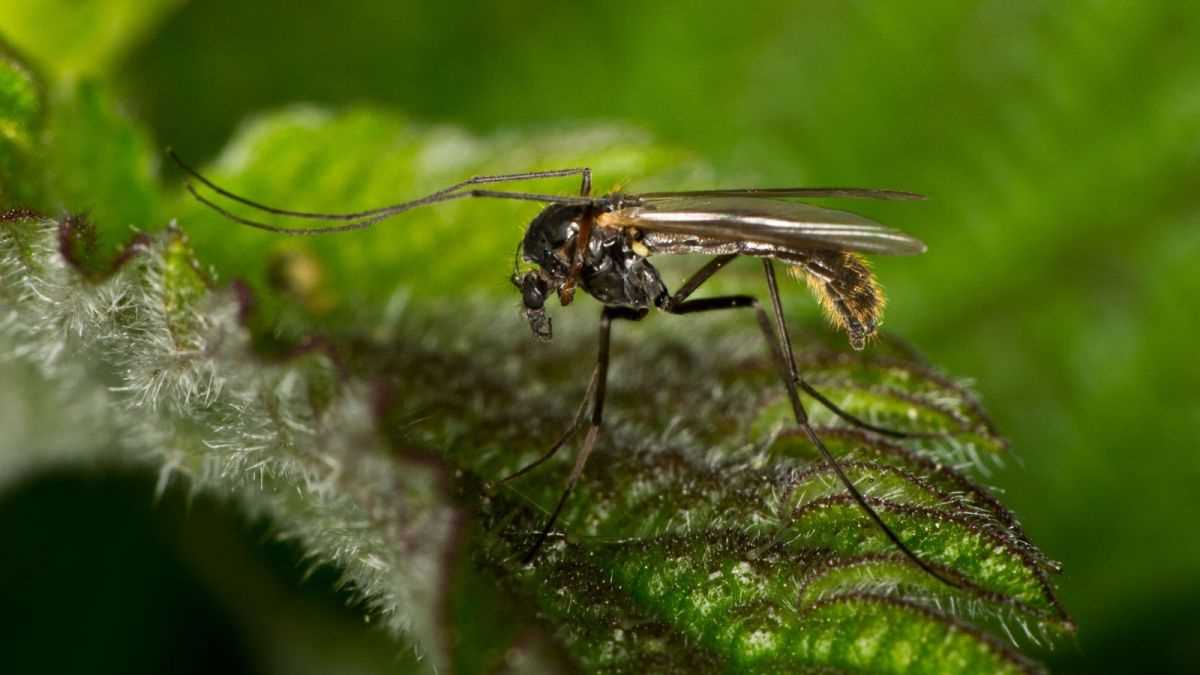
Monitoring and managing sciarid midge populations are essential for preventing and controlling infestations in gardens and greenhouses. By understanding their life cycle and habits, gardeners and horticulturists can implement effective strategies to keep their plants healthy and pest-free.
1. Monitoring Methods
- Yellow sticky traps: Placing yellow sticky traps in the growing area can help monitor adult sciarid midges. The yellow color attracts the midges, causing them to get stuck to the trap. Regularly check the traps for midge activity.
- Visual inspections: Regularly inspect plants for signs of sciarid midge activity. Look for adult midges flying around the plants, as well as larvae and pupae in the soil or on the plant surface.
- Soil sampling: Take soil samples to check for the presence of sciarid midge larvae. Dig into the soil and examine the roots and surrounding substrate for the larvae. A high population density indicates an infestation that requires management.
2. Cultural Practices
- Avoid overwatering: Sciarid midges thrive in moist environments. Avoid overwatering plants to prevent creating a favorable breeding ground for the midges.
- Proper sanitation: Regularly clean up fallen leaves, plant debris, and old potting soil. These materials can harbor sciarid midge larvae, providing them with food and shelter. Dispose of infested materials properly to prevent further infestations.
- Improve air circulation: Good air circulation helps to prevent the buildup of humidity, which can attract sciarid midges. Use fans or open windows and vents to improve airflow in greenhouses and growing areas.
3. Biological Controls
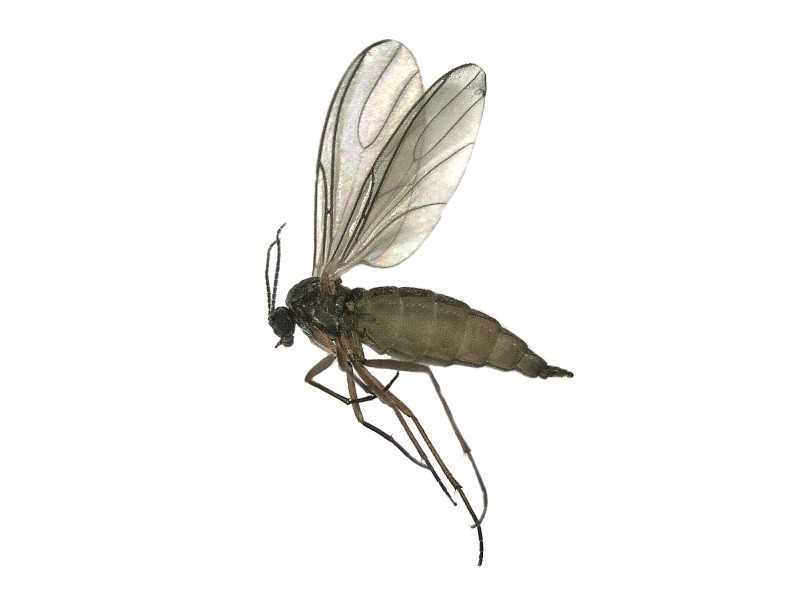
- Hypoaspis miles: This predatory mite feeds on the larvae and pupae of sciarid midges. Introducing hypoaspis miles into the growing area can help keep sciarid midge populations under control.
- Steinernema feltiae: This beneficial nematode attacks and kills sciarid midge larvae in the soil. Applying Steinernema feltiae to the growing medium can help reduce the population of sciarid midge larvae.
4. Chemical Controls
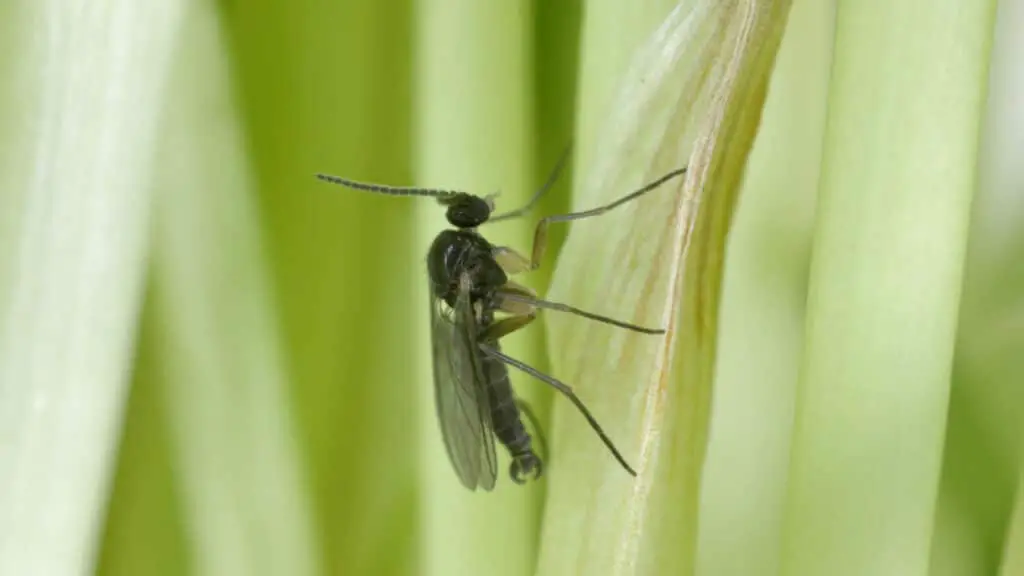
- Insecticides: In severe infestations, insecticides may be necessary to control sciarid midge populations. However, it is important to choose insecticides labeled for use on sciarid midges and follow the instructions carefully to avoid harming beneficial insects and plants.
By regularly monitoring sciarid midge populations and implementing appropriate management strategies, gardeners and horticulturists can effectively prevent and control these pests, ensuring the health and vitality of their plants.
“Question-Answer”
What are sciarid midges?
Sciarid midges are small flies that belong to the family Sciaridae. They are commonly known as fungus gnats or mushroom flies.
How can sciarid midges be prevented and controlled?
There are several key strategies and techniques that can be used to prevent and control sciarid midges. These include cultural controls, biological controls, and chemical controls.
What are cultural controls for sciarid midge prevention?
Cultural controls for sciarid midge prevention involve making changes to the growing environment to reduce the conditions that favor their development. This can include reducing moisture levels, improving air circulation, and using clean and sterilized growing media.
What are biological controls for sciarid midge prevention?
Biological controls for sciarid midge prevention involve introducing natural predators or using beneficial microorganisms to control the population of the midges. This can include using predatory mites, nematodes, or beneficial fungi.
What are chemical controls for sciarid midge prevention?
Chemical controls for sciarid midge prevention involve the use of insecticides to kill or repel the midges. This should be used as a last resort and only when other methods have failed. It is important to choose insecticides that are labeled for use on sciarid midges and to follow the instructions carefully.
Are there any natural remedies to prevent sciarid midges?
Yes, there are several natural remedies that can be used to prevent sciarid midges. These include using yellow sticky traps to capture adult midges, placing sand or coarse material on the surface of the growing media to deter egg-laying, and using beneficial nematodes to kill the larvae.
Can sciarid midges cause damage to plants?
Yes, sciarid midges can cause damage to plants. The larvae feed on the roots of plants, which can lead to stunted growth, wilting, and yellowing of leaves. Infestations can also result in poor plant health and reduced yield in crops.







